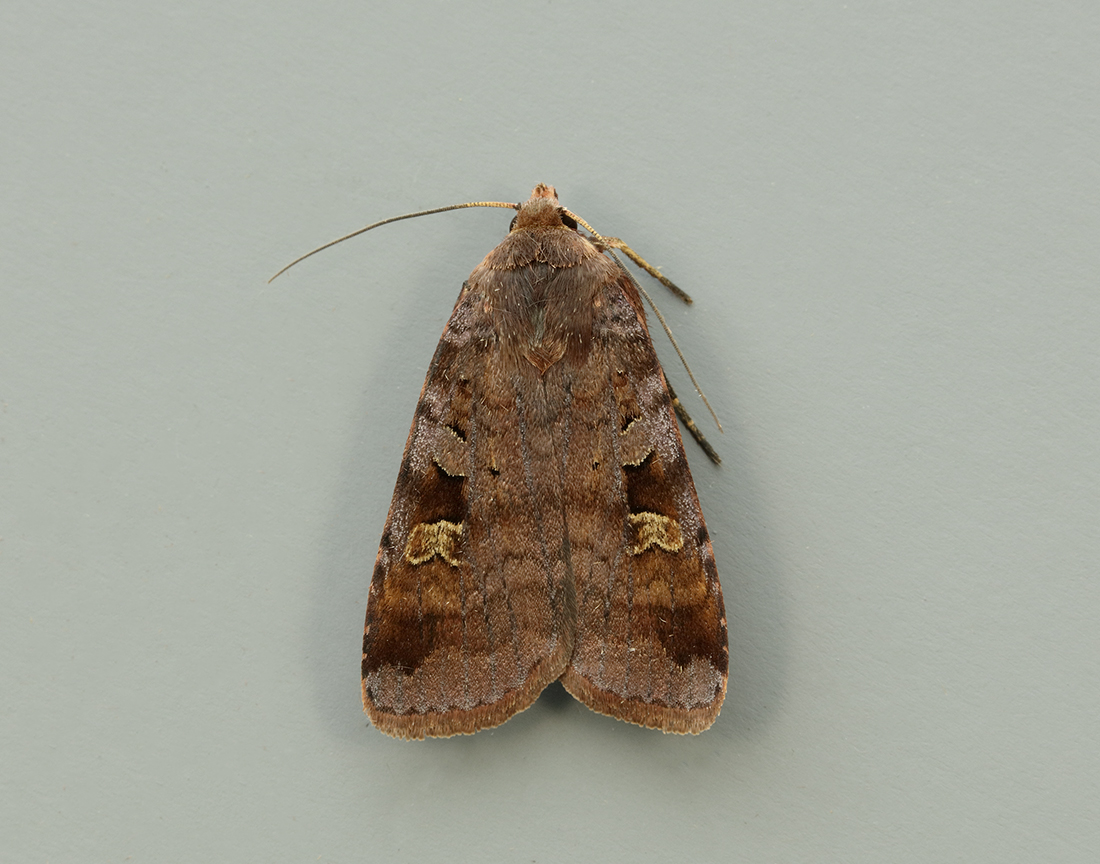Identification
The pinkish brown or rich purplish brown broad forewing that has the kidney-mark the same colour or a bright straw colour with a dark colour between it and the oval make it a distinctive moth.
Recording Method.
Attracted to light, also comes to sugar and flowers.
Life cycle
One generation. Overwinters as a small larva close to the ground, during August to May, with pupation taking place underground.
Larval foodplants
Larvae feed on Foxglove in the autumn, then Heather, sallows, Bramble, Bilberry and birches in the spring.
Habitat
Broadleaved woodland and gardens.
History
Lennon (1863) had found it at Kirkconnell (VC73). Douglas Robinson (1870-71) found it to be not rare at sugar in July on Almorness (VC73). K. J. Morton of Edinburgh (1900) while on a visit in July 1899 to Wigtownshire had found this species in the Monreith area. Gordon (1913) stated it to be rather local, sometimes common. He also had found it at sugar in the woods at Corsemalzie, on rhododendron, and had found it plentiful in the larval state on alder when it was feeding by night in late April. Earliest date was 17th June 1899.
Archibald Russell (1944) listed it as occurring near Gatehouse of Fleet (VC73) during the years 1942-43. Sir Arthur Duncan (1909-84) during his lifetime had found it at Closeburn, Tynron and Castlehill, Dumfries (all VC72).
During 1974-92 all seven Rothamsted stations contributed 350 records, proving it to be a widespread moth. It was also recorded in the early 1980s on a regular basis on the Hensol Estate.
From 1992 to 2010 the regular trapped sites at Kirkton, Cally Woods, Carsfad at Dalry, Kirkcudbright, Mersehead RSPB and Durisdeer provided a good number of the 300 records that occurred, with the rest from mainly woodland sites or adjacent to.








